|
Special Member
|
 Article on pro's and cons of conversions.
Article on pro's and cons of conversions.
Here is a cool article I founfd for those intersted in this process.
Stereo 3D: To shoot native, or convert?
By: Barry Sandrew, Ph.D.
As first run 3D feature films move into development and pre-production most filmmakers are faced with the inevitable question: whether to shoot the film with stereo cameras; commonly called ‘native’ 3D, shoot entirely in 2D and convert to 3D, or use a hybrid approach. Unfortunately some filmmakers make their decision before thoroughly investigating the relative costs and technical considerations between filming in 3D versus conversion. This lack of information or worse, misinformation about the options can result in an unsatisfying if not expensive directorial experience.
Preference For ‘Native’ Capture
Some directors are adamant about shooting with stereo rigs because they feel comfortable with the medium and have established stereo crews available that have a substantial track record. Indeed, films like, Hugo and Life of Pi are examples of masterfully captured ‘native’ stereo using Cameron-Pace proprietary rigs, under the supervision of Vince Pace, while Prometheus, Pirates of the Caribbean: On Stranger Tides and The Amazing Spiderman benefited from decades of experience and expertise that Steve Schklair and his 3ality Technica team brings to ‘native’ stereo filmmaking.
2D to 3D Conversion is Often Necessary in 'Native' Shoots
What is not widely known is that each of the films mentioned above separately lensed by Cameron-Pace and 3ality Technica required 2D to 3D conversion as a post process. Indeed, even Avatar required approximately 40 shots to be converted. In the case of Transformers: Dark of the Moon, Michael Bay started shooting the film with a single stereo rig provided by Cameron-Pace but in the end, Legend3D converted over half or 78 minutes of the film. In fact, Legend3D converted many of the most complex scenes in the film while working closely with both ILM and Digital Domain who contributed the visual effects. For at least part of the film there was no other option other than conversion. Michael Bay preferred to shoot close up and medium shots of his actors using anamorphic film. Consequently all those shots were scanned and subsequently converted from 2D to 3D.
Of significance is that converted shots in all of the titles mentioned above were intercut seamlessly throughout each film in a checkerboard fashion, yet it was impossible to tell whether a shot was created with stereo cameras or converted.
Preference For Conversion
There are other studios and directors that are shying away from 3D camera rigs all together, particularly in VFX heavy films. This is primarily because of higher VFX budgets for stereo work, extended shooting schedules and subsequent post-production costs that increase significantly for stereo capture relative to conversion. Many filmmakers who have selected the conversion path understand that budgeting to have VFX elements (RGBaz) and clean plates archived and available to the conversion vendor makes stereo compositing and cleanup much easier, more accurate, of higher quality and ultimately less costly to produce. The resulting savings can be passed on to the studio client.
Catalog Titles
For catalog titles like Top Gun, Titanic and Star Wars, conversion is the only option. Director, Tony Scott embraced the conversion process Legend3D completed on Top Gun. As he became familiar with conversion, he understood that it would have been uniquely challenging if not impossible to shoot his cockpit close-ups and dramatic aerial dogfights in the same fashion had stereo rigs been available to him 28 years ago. Tony felt that the converted stereo that Legend3D produced looked very natural and significantly enhanced the story without compromising his directorial style.
Drawbacks of ‘Native’ Capture
There’s no question that when executed correctly both conversion and stereo rigs can produce exquisite 3D so a hybrid approach is also a viable option. However both processes have unique drawbacks. Most people think of stereo rigs as two cameras positioned side-by-side in a manner similar to the way our eyes are positioned, hence the term ‘native’. However in general a side-by-side configuration is only appropriate for filming scenic landscapes, wide-shots and shots requiring a focal length of more than 25 feet. For medium and close-up shots of less than 25 feet, a very different type of camera rig is often required that’s variably called a beam-splitter, mirror-rig or over-under rig.
‘Native’ — a Misnomer For Camera Capture
Normal human binocular acuity within proximity of 25-feet is dependent on the distance between the centers of our two pupils. This 63mm average separation between our eyes creates two almost identical perspectives; one for the left eye and one for the right eye. The only difference between perspectives is a slight horizontal offset due to this intraocular separation, which is essential for stereopsis. Cameras positioned next to each other cannot normally achieve a close enough separation between lenses to simulate human vision. However, using an innovative mirror setup and some camera acrobatics, a beam-splitter can position the two lenses close enough to approximate human eye separation. One camera shoots the composition straight ahead through a slanted optical-grade polarized mirror while the second camera is positioned to shoot straight down at the reflection off the other side of the same mirror. It’s difficult to understand how this two-camera rig can be considered somehow ‘native’ relative to conversion.
In addition, while this configuration is effective, it is nonetheless plagued with technical issues. The mirror, which is typically of less quality than the camera lenses, is a dust magnet requiring constant polishing. It tends to cause color shifts between cameras as well as a one f-stop exposure reduction for each camera. It’s subject to both vibration and misalignment and it creates differential light polarization between cameras that often distorts reflections and specular highlights. To a large extent using a beam-splitter rig locks in depth choices, particularly for volume and overall depth, limiting creative intervention. This often leads to a lack of depth continuity causing uncomfortable depth changes from shot to shot that require significant postproduction processing. Add to this, vertical misalignment, focus mismatches, in-field production slowdowns tied to the positioning, maintenance and operation of the camera rigs along with the additional crew required for stereo shoots and one can make the case that camera capture is not for the faint of heart.
Drawbacks of Conversion
Conversion has its own issues. Although the price of conversion is being forced down due to heavy competition, it remains an expensive labor-intensive process that requires significant knowledge, experience and skill to accurately execute the creative direction of a filmmaker. In most cases the requisite understanding of stereography and stereopsis (the neuroscience of binocular vision) is far greater in the 2D to 3D conversion process than it is for camera capture because the former offers the filmmaker significantly more creative freedom. However along with this freedom comes the potential for stereo errors such as depth not matching scale, shallow falloff, foreshortening, etc., all of which an be adjusted by iterative adjustments. In addition, the process typically extends the post-production timeline and when separate VFX elements and/or clean plates are not available, the resulting stereo artifacts often require expensive, highly skilled compositing and/or painting to eliminate.
An Important Distinction Between ‘Native’ Capture and Conversion
An important differentiator between conversion and ‘native’ capture is that when conversion is done properly, every corresponding pixel in each eye is precisely identical in every parameter other than intentional, creatively designed disparity. None of the technical issues noted above for beam-splitter rigs apply. Consequently, post-fixes for conversion are minimal or non-existent.
Conclusion
Though both processes have their advantages and disadvantages, continued advances in the art and science of conversion is shifting the emphasis away from using camera rigs exclusively. Indeed, whether it’s a full or partial conversion, the process has become an essential tool in the filmmaker's arsenal for creating the highest quality, believable 3D. Today conversion offers the feature film director with unprecedented creative control in the process of enhanced storytelling in stereo.
Barry Sandrew, Ph.D., founder of Legend3D examines the relative benefits and drawbacks of conversion versus ‘native’ capture and how conversion is becoming an essential tool for filmmakers.
|


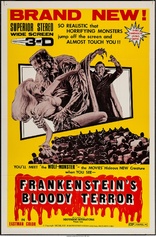

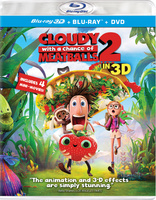
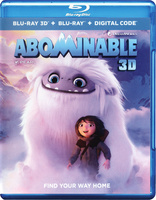
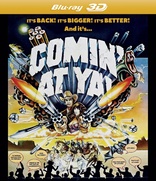
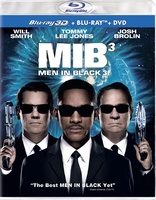
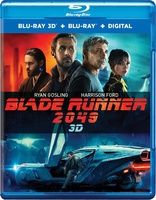
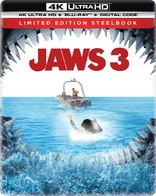




















 Hybrid Mode
Hybrid Mode
